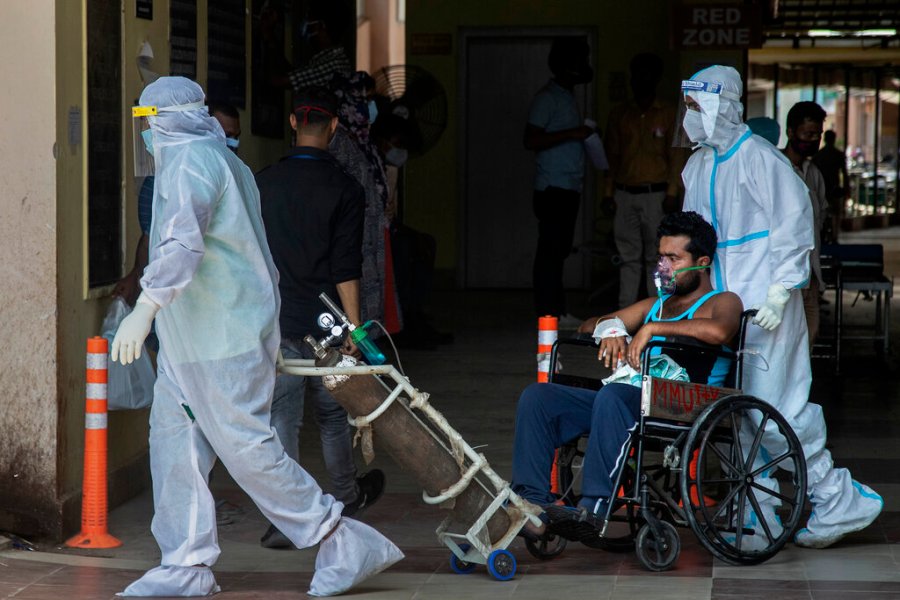India virus death toll passes 300,000, 3rd highest in world

A relative in protective suit performs last rituals as the body of a person who died of COVID-19 is cremated in Gauhati, India, Monday, May 24, 2021. India crossed another grim milestone Monday of more than 300,000 people lost to the coronavirus as a devastating surge of infections appeared to be easing in big cities but was swamping the poorer countryside. (AP Photo/Anupam Nath)
NEW DELHI (AP) — India crossed another grim milestone Monday with more than 300,000 people lost to the coronavirus, while a devastating surge of infections appeared to be easing in big cities but was swamping the poorer countryside.
The milestone, as recorded by India’s Health Ministry, comes as slowed vaccine deliveries have marred the country’s fight against the pandemic, forcing many to miss their shots, and a rare but fatal fungal infection affecting COVID-19 patients has worried doctors.
India’s death toll is the third-highest reported in the world after the U.S. and Brazil, accounting for 8.6% of the nearly 34.7 million coronavirus fatalities globally, though the true numbers are thought to be significantly greater.
The Health Ministry on Monday reported 4,454 new deaths in the last 24 hours, bringing India’s total fatalities to 303,720. It also reported 222,315 new infections, which raised the overall total to nearly 27 million since the pandemic began. Both are almost certainly undercounts.
From the remote Himalayan villages in the north, through the vast humid central plains and to the sandy beaches in the south, the pandemic has swamped India’s underfunded health care system after spreading quickly across the country.
In the capital, New Delhi, residents have died at home with no oxygen as hospitals exhausted limited supplies. In Mumbai, COVID-19 patients have died in crowded hospital corridors. In rural villages, fever and breathlessness took people before they were even tested for coronavirus.
While the megacities have seen signs of improvement in recent days, the virus isn’t finished with India by any means. It appears to have already taken a ghastly toll in the country’s vast rural areas, where a majority of the people live and where health care is limited.
Latest News
- AUTO TEST: NNN Synopsis Text
- AUTO TEST: Synopsis post
- AUTO TEST: NNN Synopsis
- AUTO TEST: Disable Ads post
- AUTO TEST POST 20241121122329
In recent weeks, hundreds of bodies have washed up on the banks of the Ganges River in Uttar Pradesh state. Many others have been found buried in shallow graves along its sandy banks. It has prompted concerns that they’re the remains of COVID-19 victims.
India’s vaccination drive has also slowed recently, and many states say they don’t have enough vaccines to administer.
The world’s largest vaccine-producing nation has fully vaccinated just over 41.6 million people, or only 3.8% of its nearly 1.4 billion people. On Monday, the federal government enabled walk-in registration at government-run vaccination centers for those aged between 18 to 44 to “minimize vaccine wastage.”
The first known COVID-19 death in India happened on March 12, 2020, in southern Karnataka state. It took seven months to reach the first 100,000 dead. The official toll hit 200,000 deaths in late April. The next 100,000 deaths were recorded in just 27 days after new infections tore through dense cities and rural areas alike and overwhelmed health care systems on the brink of collapse.
Average daily deaths and cases have slightly decreased in the past few weeks and the government on Sunday said it is conducting the highest number of COVID-19 tests, with more than 2.1 million samples tested in the previous 24 hours.
















